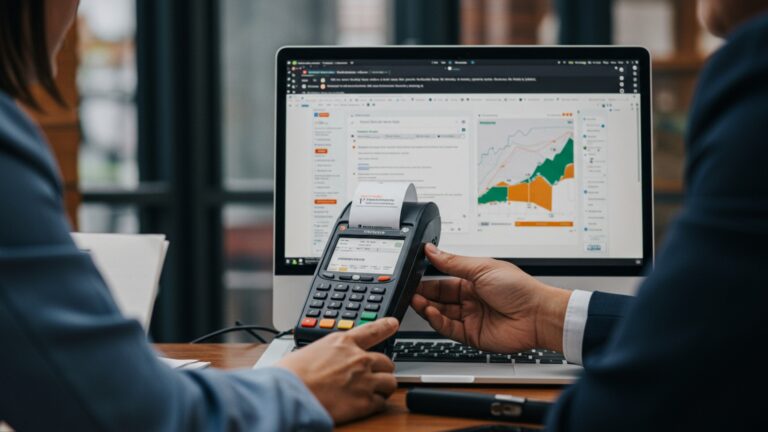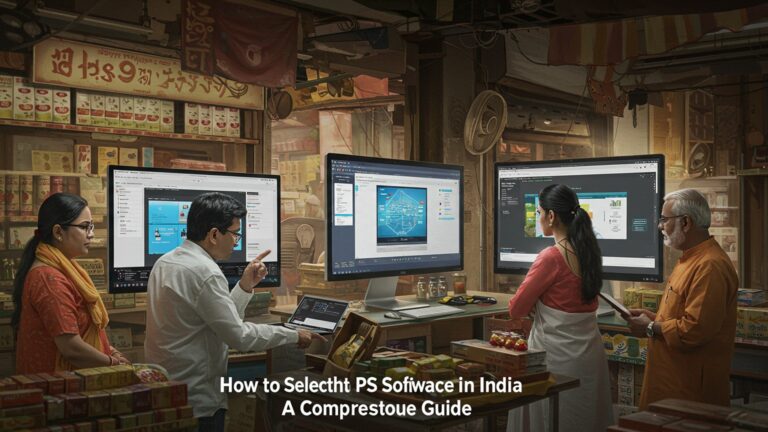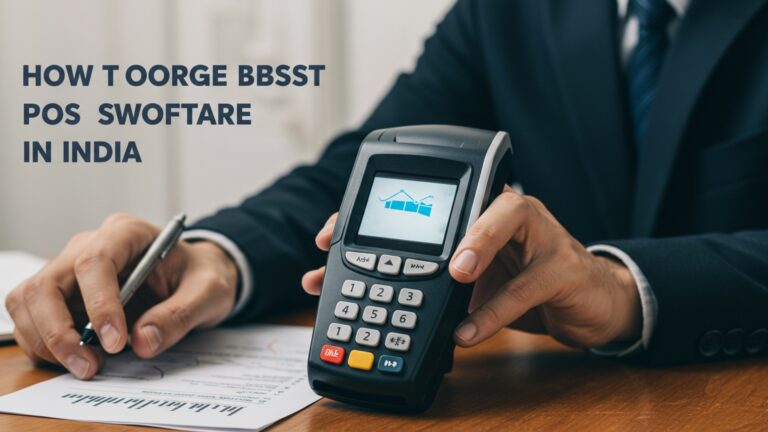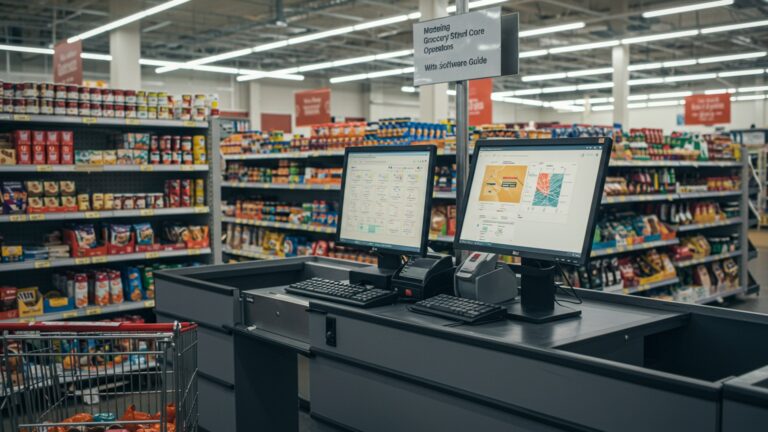A Practical Guide How to Choose POS Software for Your Grocery Store
Grocery store owners face a critical decision when selecting new POS software, particularly as the retail landscape rapidly evolves with customer expectations for seamless experiences. Beyond basic transaction processing, a robust pos software for grocery store operations now integrates advanced features like AI-powered inventory management to minimize spoilage, real-time analytics for personalized promotions. flexible payment options including contactless and EBT. The modern system must also support omnichannel strategies, bridging in-store purchases with online orders and curbside pickup, ensuring comprehensive supply chain visibility from farm to checkout. Choosing the right platform significantly impacts operational efficiency, reduces labor costs. cultivates customer loyalty in a competitive market.
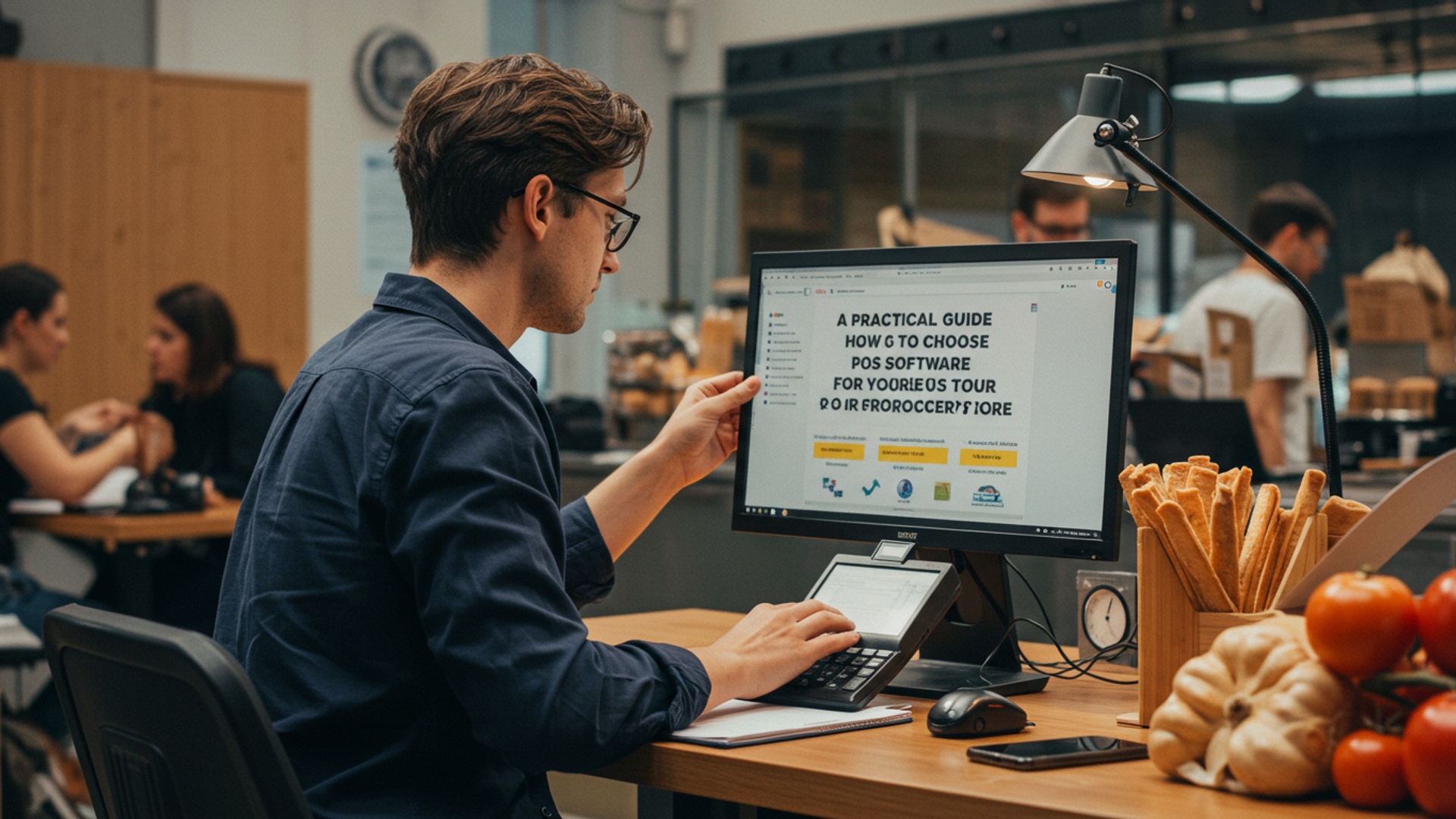
Understanding the Core of POS Software for Grocery Stores
In the competitive landscape of modern retail, a robust Point of Sale (POS) system is no longer just a luxury for grocery stores; it’s a fundamental necessity. While many think of POS as simply a cash register, today’s pos software for grocery store is a comprehensive ecosystem designed to streamline operations, enhance customer experience. drive profitability. It acts as the central nervous system of your business, managing everything from transactions to inventory and customer data.
At its heart, POS software processes sales transactions. But, for a grocery store, its capabilities extend far beyond ringing up items. It integrates various aspects of your business, offering a unified platform for management. Think of it as a control panel where every sale, every inventory movement. every customer interaction is recorded and analyzed. This holistic approach ensures efficiency and provides invaluable insights into your store’s performance.
Why Modern POS is Indispensable for Grocery Operations
The specific demands of a grocery store — managing perishable goods, high transaction volumes, diverse product categories. fluctuating prices — necessitate a specialized pos software for grocery store. Here’s why it’s critical:
- Speed and Accuracy
- Inventory Control
- Customer Loyalty
- Operational Efficiency
- Data-Driven Decisions
High customer traffic means quick checkouts are paramount. Modern POS systems, often integrated with barcode scanners and weighing scales, drastically reduce transaction times and minimize human error.
Groceries involve complex inventory. From tracking expiration dates to managing various units of measure (e. g. , by weight, by count, by package), a specialized POS helps prevent spoilage, reduce waste. ensure shelves are always stocked.
Building repeat business is vital. POS software can power loyalty programs, track purchase history. facilitate targeted promotions, fostering stronger customer relationships.
Automating tasks like reordering, reporting. employee scheduling frees up staff to focus on customer service and store presentation.
Comprehensive sales reports, peak hour analysis. popular product insights empower owners to make informed decisions about staffing, promotions. product assortment.
Key Features to Prioritize in POS Software for Your Grocery Store
When evaluating pos software for grocery store, certain features are non-negotiable for optimizing your unique operations. Consider these core functionalities:
- Advanced Inventory Management
- Perishable Tracking
- Batch Management
- Multiple Units of Measure
- Automated Reordering
- Vendor Management
- Customer Relationship Management (CRM) & Loyalty
- Customer Profiles
- Loyalty Programs
- Marketing Tools
- Robust Reporting and Analytics
- Sales Reports
- Inventory Reports
- Employee Performance
- Customer Insights
- Employee Management
- Time Clock
- Permission Levels
- Performance Tracking
- Flexible Payment Processing
- Multiple Payment Types
- EMV Compliance
- Integrated vs. Standalone
- Scalability and Integrations
- E-commerce Integration
- Accounting Software Integration
- Third-Party Delivery Services
- Multi-Store Management
- Self-Checkout and Kiosk Options
- Offer customers the convenience of scanning and paying for their own groceries, reducing queues and labor costs.
Ability to track expiration dates and implement First-In, First-Out (FIFO) or First-Expired, First-Out (FEFO) strategies.
Ideal for products with lot numbers or production batches.
Support for selling items by weight (e. g. , produce), by count, or by package, with seamless integration with digital weighing scales.
Set minimum stock levels to trigger automatic purchase orders when inventory runs low.
Track supplier data, purchase history. delivery schedules.
Store purchase history, contact data. preferences.
Implement points-based systems, member discounts, or targeted promotions to reward repeat customers.
Send personalized offers via email or SMS based on buying patterns.
Daily, weekly, monthly. annual sales breakdowns by product, category, time of day. employee.
Stock levels, slow-moving items. shrinkage analysis.
Track individual sales, hours worked. productivity.
Identify top customers, popular products. buying trends.
Track employee clock-ins and clock-outs.
Assign different access rights to various staff roles (e. g. , cashiers, managers, owners).
Monitor sales targets and commission structures.
Accept credit/debit cards, mobile payments (Apple Pay, Google Pay), gift cards, EBT. contactless payments.
Ensure secure chip card processing to protect against fraud.
Integrated processing streamlines reconciliation and reduces errors.
Sync online and in-store inventory and sales if you offer online ordering or delivery.
Seamlessly transfer sales data to platforms like QuickBooks or Xero.
Integrate with services like Instacart or DoorDash.
If you plan to expand, the POS should support centralized management of multiple locations.
A real-world example illustrates this point: “FreshFinds Market,” a mid-sized grocery store, implemented new pos software for grocery store with advanced inventory tracking. Before, they’d regularly run out of popular organic produce or have excess perishables spoil. After implementation, the system’s automated reorder points and expiration date alerts reduced waste by 15% and ensured top-selling items were always in stock, leading to a noticeable increase in customer satisfaction and sales.
Deployment Models: On-Premise vs. Cloud-Based POS for Grocers
When selecting your pos software for grocery store, a critical decision is whether to opt for an on-premise or cloud-based solution. Each has distinct advantages and disadvantages:
| Feature | On-Premise POS | Cloud-Based POS |
|---|---|---|
| Definition | Software installed directly on your store’s computers/servers. You own the software license. | Software hosted by the vendor on remote servers, accessed via the internet. You subscribe to the service. |
| Cost Structure | Higher upfront cost (software license, hardware, installation). Lower ongoing subscription fees (maintenance/support). | Lower upfront cost (typically just hardware). Higher ongoing subscription fees (monthly/annual). |
| Data Storage | Data stored locally on your servers. | Data stored remotely on the vendor’s cloud servers. |
| Accessibility | Limited to your store’s network. Remote access often requires complex VPN setups. | Access data and manage your store from anywhere with an internet connection (e. g. , home, multiple locations). |
| Updates & Maintenance | You are responsible for updates, backups. security. Requires IT expertise. | Vendor handles all updates, backups. security patches automatically. |
| Scalability | Can be challenging and costly to scale (requires additional hardware/licenses). | Highly scalable; easily add or remove terminals, users, or locations with minimal effort. |
| Internet Dependency | Can operate without a constant internet connection (though some features might need it). | Requires a stable internet connection for full functionality. Offline mode usually supports basic transactions. |
| Security | You are responsible for data security and compliance. | Vendor is responsible for data security, often with robust measures and compliance certifications. |
For many modern grocery stores, especially those looking for flexibility, remote management. lower upfront costs, cloud-based POS systems are increasingly popular. But, a store in a location with unreliable internet might still consider an on-premise solution with robust offline capabilities.
The Evaluation Process: Choosing the Right Vendor and Solution
Once you comprehend the features you need and your preferred deployment model, the next step is to evaluate specific vendors. This process requires thorough research and due diligence.
- Define Your Requirements
- Research and Shortlist
- Request Demonstrations
- comprehend Pricing Models
- Software Licensing/Subscription
- Hardware Costs
- Payment Processing Fees
- Implementation and Training
- Ongoing Support
- Check Support and Training
- Availability
- Channels
- Training
- Responsiveness
- Read Customer Reviews and Testimonials
- Security and Compliance
Before even looking at vendors, create a detailed list of your store’s specific needs, including the number of lanes, types of products, volume of transactions. specific integrations required (e. g. , with your existing accounting software).
Look for pos software for grocery store solutions that specialize in the grocery sector. Read industry reviews, check comparison websites. ask other local grocery store owners for recommendations. Aim for a shortlist of 3-5 vendors.
Contact your shortlisted vendors for personalized demos. Insist on seeing the features most relevant to your grocery store in action, such as inventory management for perishables, weighing scale integration. loyalty program setup. Ask specific questions about how their system handles your unique challenges.
Pricing can vary significantly. Be clear on all costs:
One-time fee for on-premise or monthly/annual for cloud.
Terminals, scanners, printers, cash drawers, customer displays, weighing scales.
Transaction rates, gateway fees, chargeback fees.
Initial setup, data migration. staff training costs.
Is support included in the subscription, or is it an additional cost?
A complex system requires excellent support. Inquire about:
24/7 support or limited hours?
Phone, email, live chat, knowledge base.
On-site, online tutorials, or self-paced learning modules.
What are their typical response times for critical issues?
Look beyond the vendor’s website. Sites like Capterra, G2. Software Advice offer unbiased user reviews. Pay attention to feedback regarding ease of use, reliability. customer service for a pos software for grocery store.
Ensure the system is PCI DSS compliant for handling cardholder data. For cloud solutions, inquire about their data encryption, backup protocols. disaster recovery plans.
A good practice is to ask for references from similar-sized grocery stores that use their pos software for grocery store. Speaking directly with current users can provide invaluable insights into the system’s real-world performance and the vendor’s support quality.
Implementation and Beyond: Making Your POS a Success
Selecting the right pos software for grocery store is only the first step. Successful implementation and ongoing management are crucial for realizing its full benefits.
- Data Migration
- Staff Training
- Go-Live Strategy
- Ongoing Support and Updates
- Performance Monitoring
This is often the most challenging part. Carefully plan how to transfer existing product data, pricing, customer insights. inventory levels into the new system. Many vendors offer migration services, which can be a worthwhile investment.
Comprehensive training for all staff members, from cashiers to managers, is essential. Hands-on practice, clear instructions. a supportive environment will ensure a smooth transition and boost adoption rates. Consider creating cheat sheets or quick-reference guides for common tasks.
Plan a phased rollout or choose a slower period for the initial launch to minimize disruption. Have vendor support staff or key internal experts on standby to address immediate issues.
Technology evolves. Ensure your chosen vendor provides regular software updates, bug fixes. security patches. comprehend how these updates are deployed and what impact they might have on your operations. Maintain a good relationship with your support team for any future issues or questions.
Regularly review the reports and analytics generated by your pos software for grocery store. Use this data to identify areas for improvement, optimize inventory, refine pricing strategies. enhance customer service.
By following these guidelines, a grocery store can confidently select and implement a POS system that not only meets current needs but also supports future growth and operational excellence.
Conclusion
Choosing the right POS software for your grocery store transcends merely picking a system; it’s about investing in a future where efficiency meets customer satisfaction. Remember, the true value lies in how seamlessly it handles your unique operational demands—from rapid checkout for fresh produce, often requiring weight-based billing, to robust, real-time inventory tracking for perishable goods. I once observed a small grocer transform their daily chaos into calm simply by adopting a system that automated their stock alerts, preventing out-of-stocks on popular items like organic milk and artisanal bread. My personal tip: always prioritize a demo that simulates your actual store environment, not just a generic presentation. Ask to see how it integrates with online delivery platforms, a crucial trend for modern grocery success. involve your checkout staff in the decision-making process. Their daily interactions provide invaluable insights. This isn’t just a purchase; it’s a strategic partnership. Embrace this journey with confidence, knowing that a well-chosen POS is the bedrock of a thriving, future-ready grocery business.
More Articles
Learn How to Select the Right POS Software for Your Business Success
7 Essential Inventory Management POS Strategies for Indian Businesses
How to Choose the Best Billing and POS Software for Your Business
Learn 6 Smart Strategies for Better Inventory Management with POS in India
A Practical Guide How to Optimize POS Software for Grocery Stores
FAQs
Why is a specialized POS vital for a grocery store, rather than just any retail POS?
Grocery stores have unique needs like managing perishable inventory, handling weighted items with integrated scales, processing high transaction volumes quickly. often managing customer loyalty programs. A specialized POS understands these nuances, making operations much smoother and more efficient than a generic retail system.
What are the absolute essential features I should look for in grocery POS software?
Definitely look for robust inventory management (especially for perishables and varying unit types), integrated scales for weighted produce, quick barcode scanning, customer loyalty programs, employee management. detailed reporting. The ability to handle promotions and discounts easily is also key.
How much should I expect to pay. are there hidden costs?
Costs vary widely. You might pay a monthly subscription for cloud-based systems or a one-time license fee for on-premise software, plus potential annual maintenance. Don’t forget hardware costs (POS terminals, scanners, scales), installation, data migration. ongoing support fees. Always ask for a comprehensive breakdown!
What’s the difference between cloud-based and on-premise POS. which is better for a grocery?
Cloud-based systems are hosted online, accessible from anywhere. usually involve monthly subscriptions, automatic updates. less upfront IT hassle. On-premise means the software is installed directly on your store’s computers, giving you more control but requiring you to manage updates and backups. For most modern grocery stores, cloud-based offers more flexibility and easier scalability.
How complicated is it to get a new POS system up and running in my store?
It can seem daunting. a good vendor will guide you. Key steps include data migration (moving your existing product info, prices, customer data), hardware setup. thorough staff training. Plan for some overlap or a slightly slower pace initially. with proper planning, it should be a smooth transition.
Can POS software really help me manage my grocery store’s inventory better, especially with fresh produce?
Absolutely! A good grocery POS system tracks every item sold, helping you monitor stock levels in real-time. It can alert you to low stock, identify slow-moving items. even help manage expiration dates for perishables, reducing waste and optimizing your ordering process significantly.
My current hardware is old. Will I need to buy all new equipment for a new POS system?
Not necessarily all of it. it depends on the new software. Some modern POS systems are more flexible and can integrate with existing barcode scanners or receipt printers. But, you might need new POS terminals, integrated scales, or payment terminals to ensure full compatibility and take advantage of all features. Always check the vendor’s hardware requirements.

